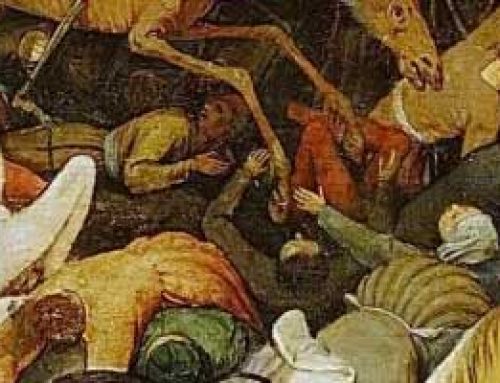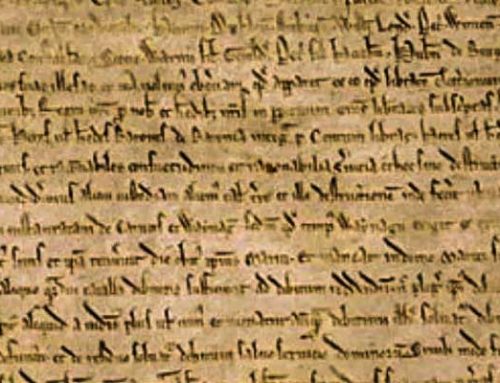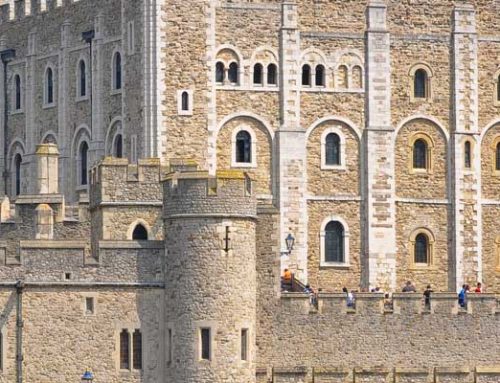In 476CE, warriors attacked the city of Rome and ended more than 800 years of glory for the “Eternal City.” Historians mark this event as the end of ancient history in Western Europe. About one thousand years later, Europe experienced a “rebirth” called the Renaissance. The thousand years between the fall of Rome and the Renaissance is known as the Middle Ages. Many historians use the Latin term – “medieval” – to describe the era.
The people of Western Europe who lived during the Middle Ages didn’t view themselves as in the middle of anything. They were more likely to regard themselves as living at the end of time because the great civilizations of Greece and Rome had fallen.
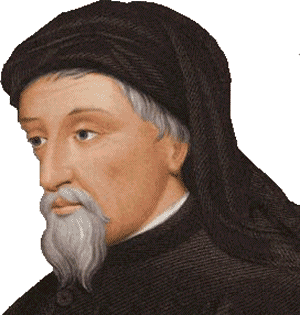
Geoffrey_Chaucer
Geoffrey Chaucer (c. 1343 – 1400) is regarded as the Father of English literature. His best-known work is The Canterbury Tales (c. the 1380s), a collection of fictional anecdotes told by pilgrims traveling to the at Canterbury, in Kent, England.
Terrible periods of famine, or great hunger, were common during the Middle Ages. Farmers knew that just one or two years of bad harvests could mean starvation for an entire family.
People had little understanding of hygiene, and frequently faced widespread disease. Children often died in infancy; a woman might give birth to ten children only to see two or three live past infancy. In the middle of the fourteenth century, a terrible disease called the Black Death killed nearly one-third of the people of Europe.
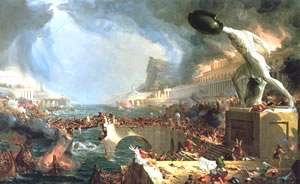
Fall_of_Rome
The Middle Ages: The Fall of Rome by Thomas Cole (1833 – 1336) is part of a series of five paintings he called The Course of Empire.
Life for most people in Western Europe during the Middle Ages was challenging, and few thought conditions could improve. Feudalism replaced the protection of the Roman army. Poor farmers often lived on land owned by noble families loyal to the ruler. Society was divided into strict social classes, making it nearly impossible for a landless person to escape poverty.
The beginning of the Middle Ages in Western Europe is often called the “Dark Age.” Life during this time was often difficult and short. It was an era of war, as barbarian armies overran land once controlled by Roman armies.
The only hope for most people in Western Europe during the Middle Ages was their faith in Christianity and the hope that life in heaven would be better than life on earth. During the Middle Ages, builders demonstrated their faith by constructing massive cathedrals. Many European cathedrals soared high above the simple dwellings of ordinary people, many took more than a lifetime to complete.
Despite the significant challenges of the era, some of the seeds of our modern life were first planted during the Middle Ages. Many modern legal rights stem from the Magna Carta written in 1215, when English nobles forced their king to accept limits on his powers. Formal education began as the first universities were organized in the eleventh century.
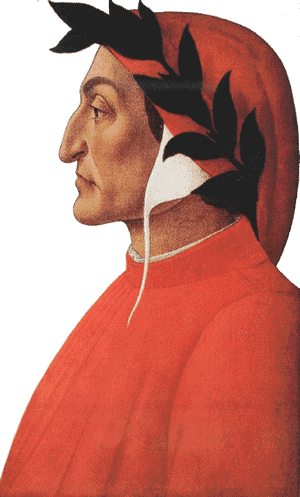
Dante Alighieri (c. 1265–1321), was an Italian poet whose Divine Comedy (1320) is considered one of the greatest literary works of the Middle Ages.
Though few people could read or write, some of the most beautifully crafted works of literature were composed. Beowulf, Geoffrey Chaucer’s Canterbury Tales, Dante’s poetry, and King Arthur’s legends are still read and admired today. The few books produced during the Middle Ages were called manuscripts, meaning “written by hand,” because the printing press had not yet been invented.
Europe’s Dark Age was anything but dark in other parts of the world. Muslims in the Middle East studied and improved on the works of the ancient Greeks, while civilization flourished in sub-Saharan Africa, China, India, and the Americas.
Europe began to experience momentous change by about 1450, a period we now call the Renaissance. Renaissance is a term that means “rebirth.” Within one hundred years, Columbus sailed to America, literacy spread after the invention of the printing press, scientists made great discoveries, and artists created work that still inspires us today. Historians regard the Renaissance as the beginning of modern history.
Resources
Download this lesson as Microsoft Word file or as an Adobe Acrobat file.
Listen as Mr. Dowling reads this lesson.
Mr. Donn has an excellent website that includes a section on the Middle Ages.
TIMELINE OF THE MIDDLE AGES | |
476 | The Middle Ages begin as Odoacer deposes the last Roman Emperor. |
c.500 | The legendary King Arthur is said to have led the British in a war against Saxon invaders. |
507 | Clovis leads the Franks to victory over the Visigoths. |
525 | A Christian monk named Dionysius Exiguus publishes an Easter table. The table dates the current year from the birth of Christ. Dionysius labels this Anno Domani. |
622 | Muhammad and his followers journey from Mecca to Medina in present day Saudi Arabia. |
711 | Jabal Tariq and his army of 10,000 Muslim soldiers invade Spain. Within a decade they will control most of the Iberian Peninsula. |
732 | Charles Martel turns back the Muslim army in present day France. |
768 | Charles Martel’s grandson, Charlemagne, become King of the Franks. |
793 | The Vikings attack a British monetary at Lindisfarne. |
800 | Charlemagne is crowned Holy Roman Emperor. |
874 | Iceland is settled by Norsemen. |
911 | Rollo begins a Viking settlement in northwestern France that is eventually called Normandy. |
c.1000 | Leif Eriksson leads a Viking settlement in North America called Vinland. |
1066 | William the Conqueror, Duke of Normandy, invades England and becomes King. |
1095 | Pope Urban II calls the First Crusade. |
1187 | Saladin recaptures Jerusalem. |
1215 | English King John I signs the Magna Carta. This marks one of the first times a medieval ruler is forced to accept limits on his power. |
1337 | England and France begin a series of wars lasting over 117 years. The era is later called the Hundred Years’ War. |
1348 | The Black Death takes the lives of as many as a third of the people of Europe. |
1439 | Johannes Gutenberg invents the printing press. |


